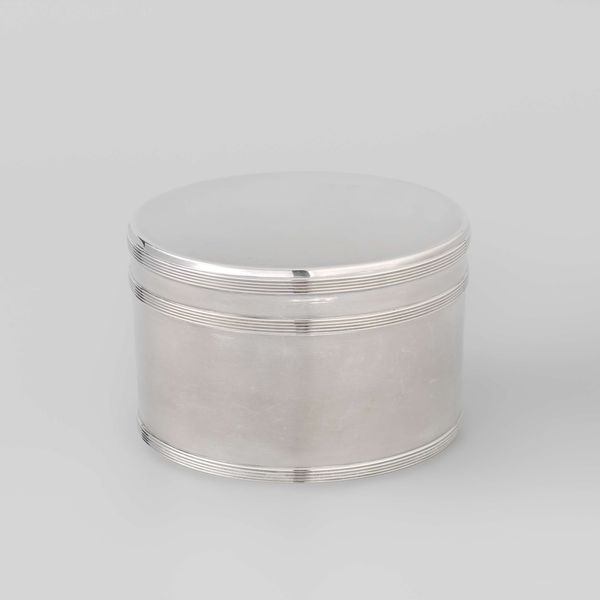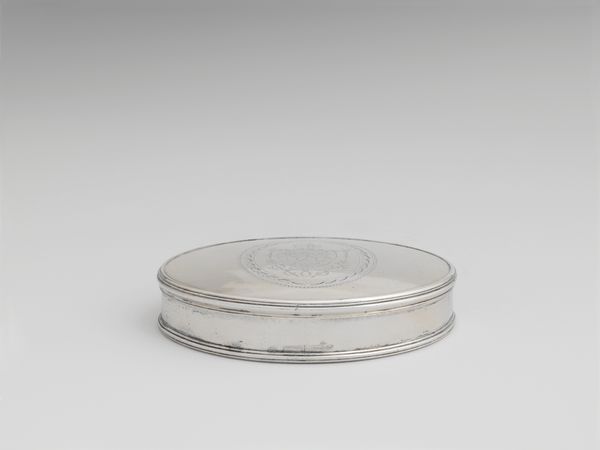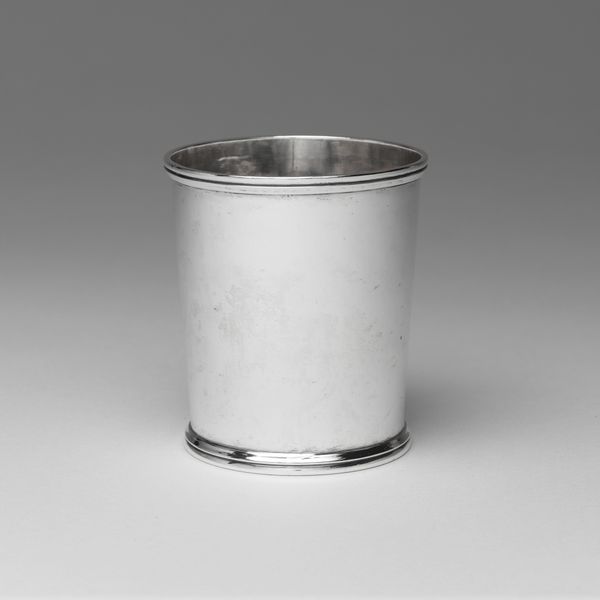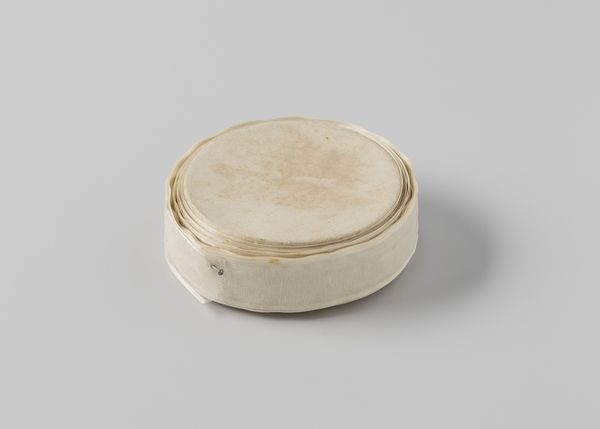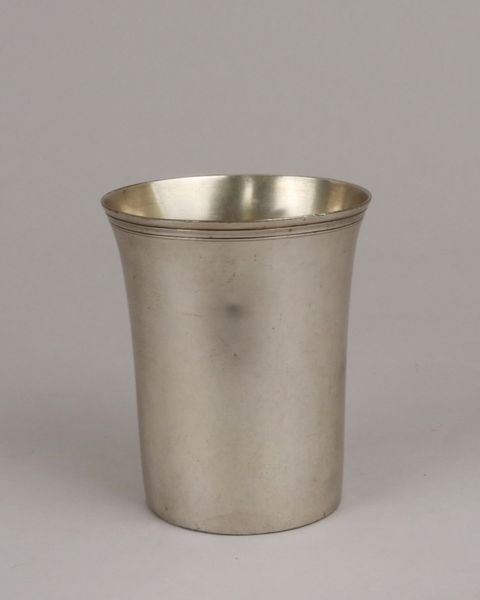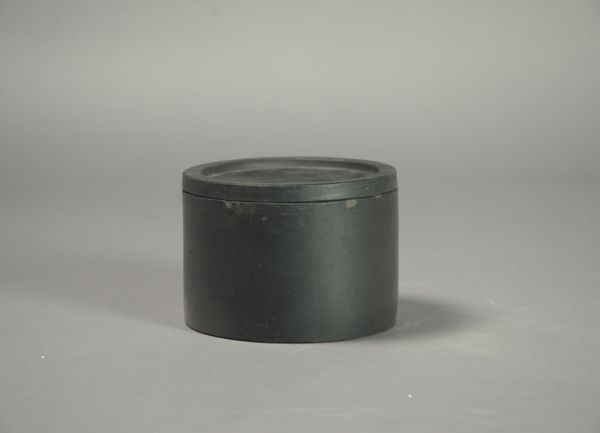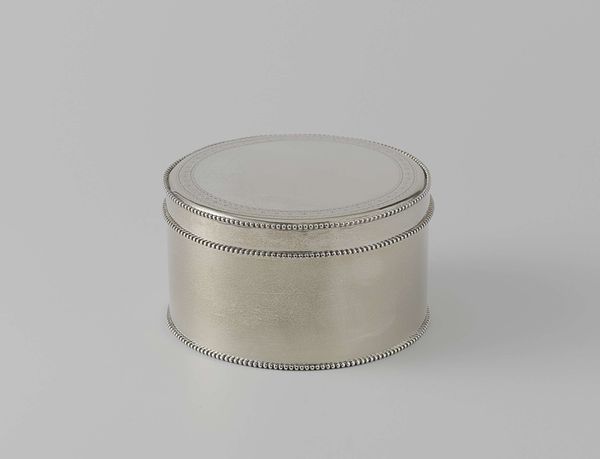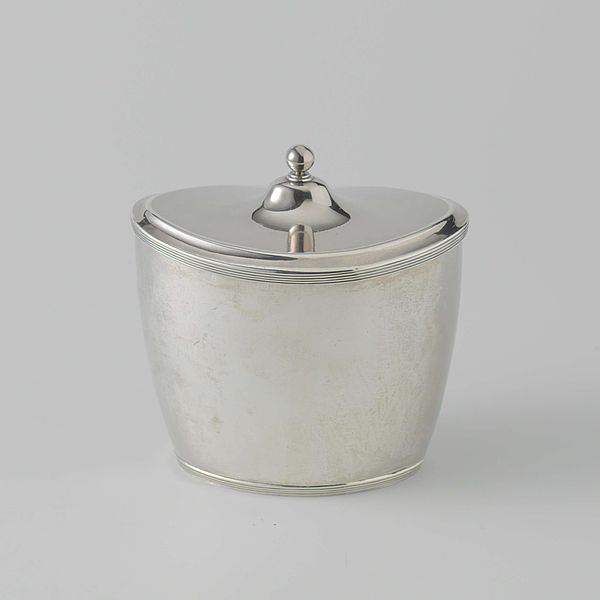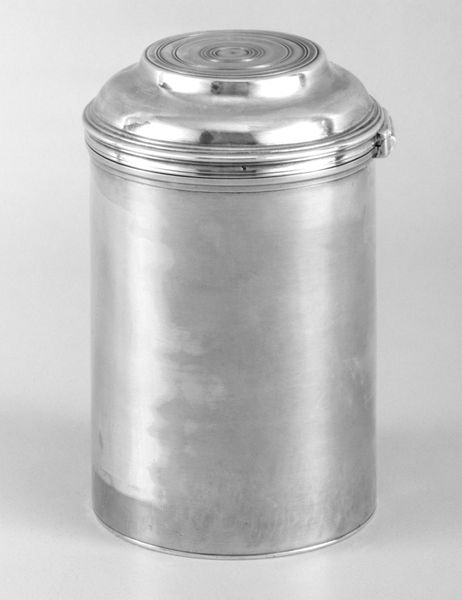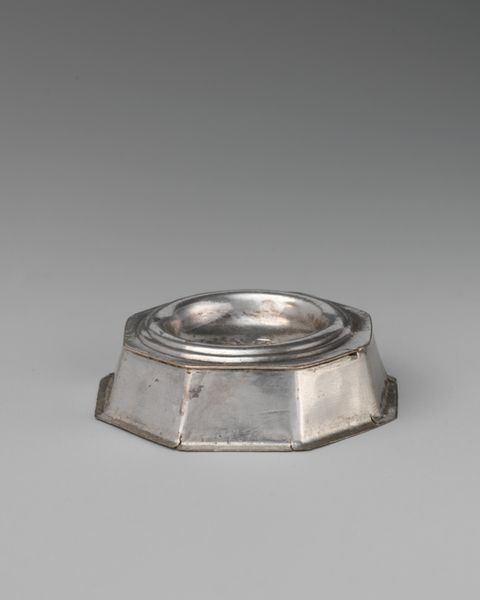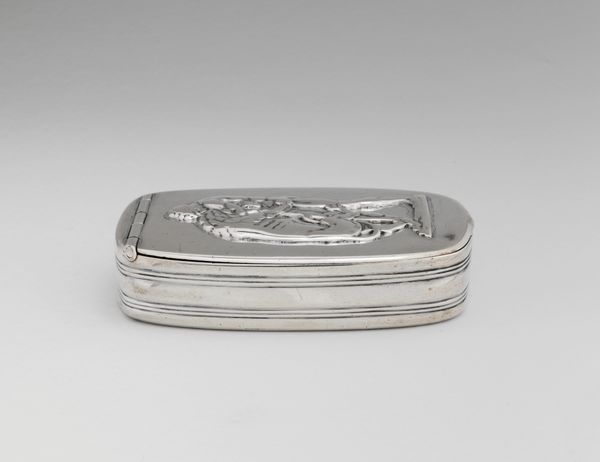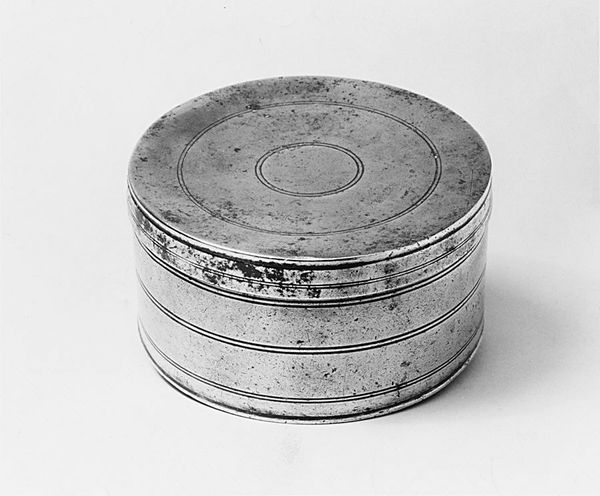
Dimensions: height 7.6 cm, diameter 12.7 cm, weight 495.5 gr
Copyright: Rijks Museum: Open Domain
This silver box was made by Francois Marcus Simons, sometime in the late 18th or early 19th century. It shows what could be achieved with this precious material. Silver’s reflective surface and soft, malleable nature lend themselves well to decoration. The silversmith has skillfully used these qualities, creating a smooth, gleaming form with delicate engraved details on the lid. The box was likely raised and hammered from a single sheet of silver, a labor-intensive process requiring immense skill. Notice the evenness of the walls and the crispness of the engraved pattern. Objects like this one demonstrate the close relationship between craft and commerce. Silver was a valuable commodity, and its transformation into functional objects was both an artistic endeavor and an economic transaction. The very concept of luxury is bound up with the labor of production. Appreciating the art of this era, therefore, lies in understanding how materials, making, and social context intersect.
Comments
No comments
Be the first to comment and join the conversation on the ultimate creative platform.
